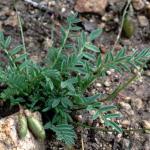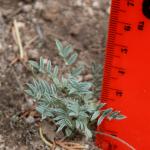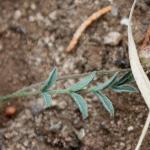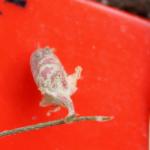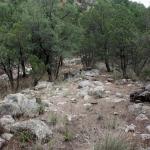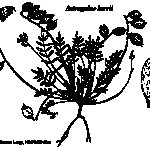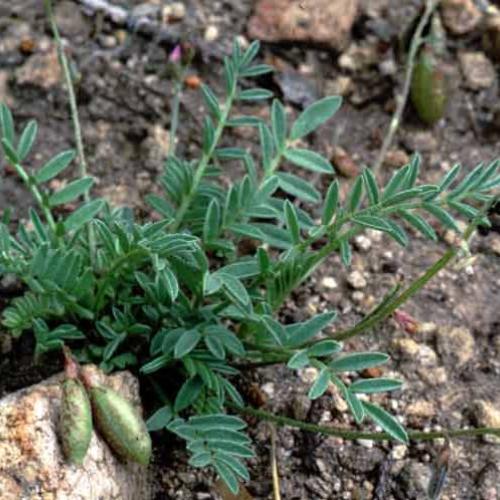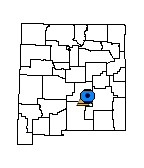Description
Tufted perennial from a taproot; stems numerous, wiry, 1-4 cm long; herbage strigulose with basifixed to obscurely dolabriform hairs; leaves crowded, 2-4 cm long; leaflets 9-15, 2.5-8 mm long, 1.5-2 times longer than wide; stipules connate (fused, forming a ring around the stem); racemes dimorphic, either short, included among leaves, and with 1-2 flowers, or exserted from leaves on long peduncles and with 2-4 flowers; flowers pea-like, ascending and spreading; calyx tubes 1.3-2.5 mm long, with mixed black and white hairs, lobes 0.7-1.2 mm; corolla 5-6 mm long, off-white to lilac; fruits spreading or drooping, substipitate (stipes 0.5-0.8 mm long), unilocular, dehiscent, body ellipsoid, somewhat inflated, 8-14 mm by 4-6 mm, valves thickly papery, red-mottled, glabrous or slightly pubescent. Flowers May-June, sometimes apparently in the first year.
Similar Species
Astragalus kerrii may be confused with A. pictiformis, a rhizomatous plant restricted to limestone habitats, and which has larger flowers, more flowers per inflorescence, and monomorphic racemes. Astragalus nuttallianus is another small sympatric species, but it is an annual and has curved, bilocular pods. The allopatric Astragalus knightii is a related species with distinctly dolabriform hairs and more flowers per raceme.
Distribution
New Mexico, Lincoln County, eastern half of the Capitan Mountains.
Habitat
Dry, sandy or gravelly bars or benches of granitic alluvium in piñon-juniper woodland and lower ponderosa pine forest; 1,650-2,290 m (5,420-7,520 ft).
Conservation Considerations
The effects of forest fire or lack of natural fire regime on this plant have not been studied. Otherwise, there are no apparent threats to this species because of its isolation and ability to utilize some disturbed habitats. As of 1994, the U.S. Forest Service was conducting long-term monitoring studies at various locations.
Important Literature
Bleakly, D.L. and S.L. Reed. 1994. Survey for Astragalus kerrii (Kerr's milkvetch), Capitan Mountains, Lincoln County, New Mexico. New Mexico Forestry Division of the Energy, Minerals and Natural Resources Department, Santa Fe.
Isely, D. 1998. Native and naturalized Leguminosae (Fabaceae) of the United States (exclusive of Alaska and Hawaii). Monte L. Bean Life Science Museum, Brigham Young University, Provo, Utah.
*Knight, P.J. and A.C. Cully. 1991. A new species of Astragalus (Fabaceae) from southeastern New Mexico. Southwestern Naturalist 36(2):198-200.

